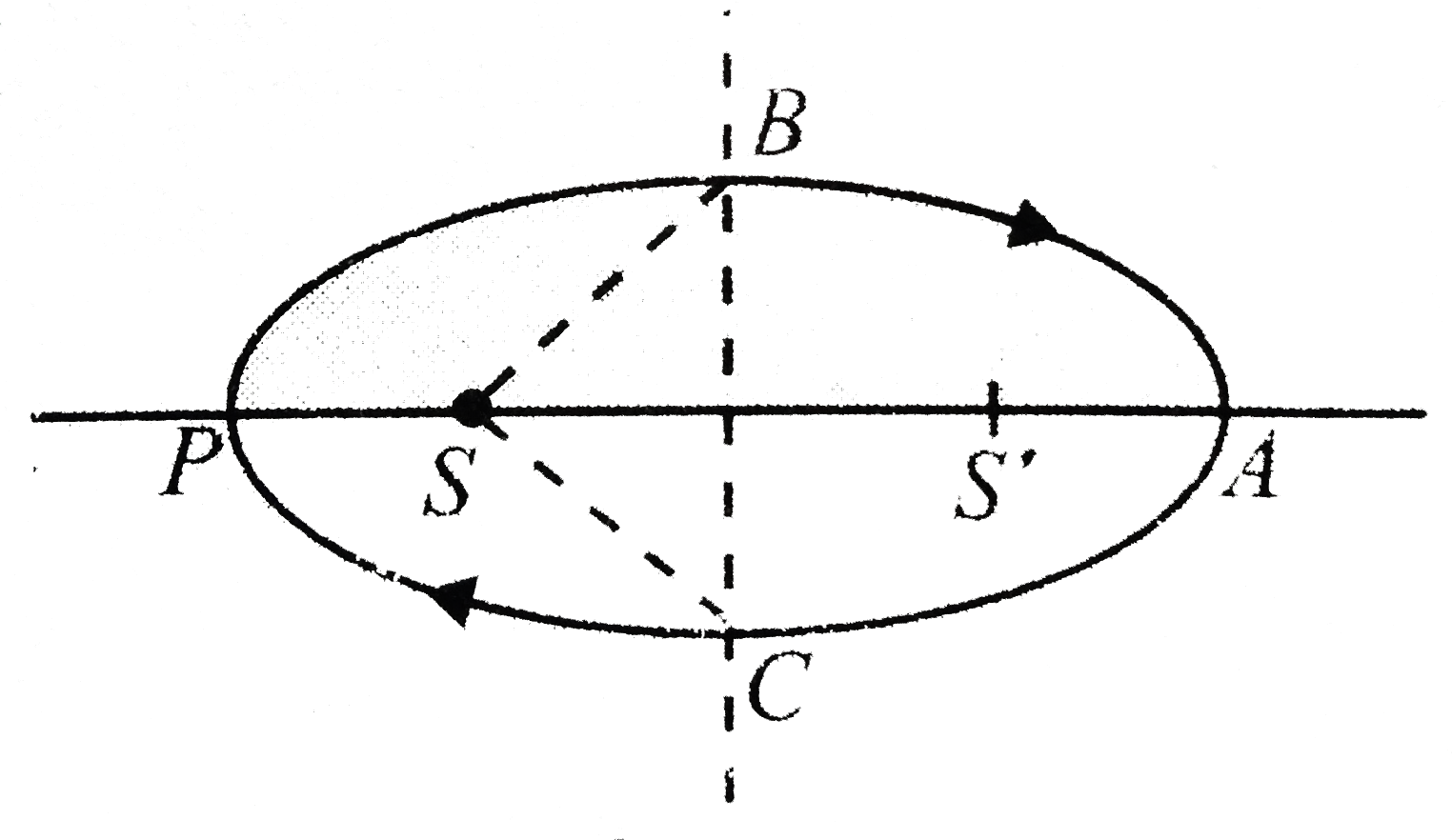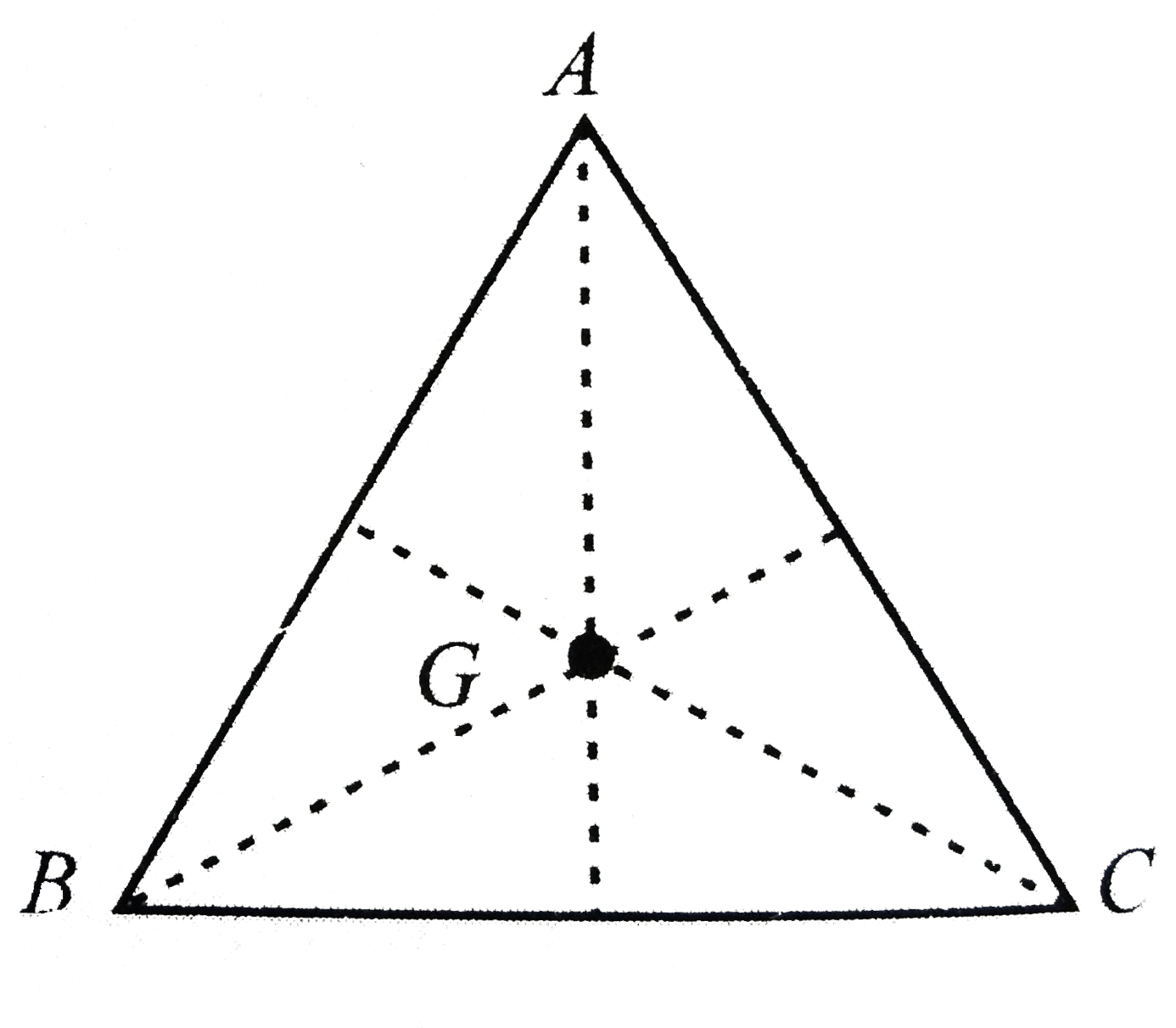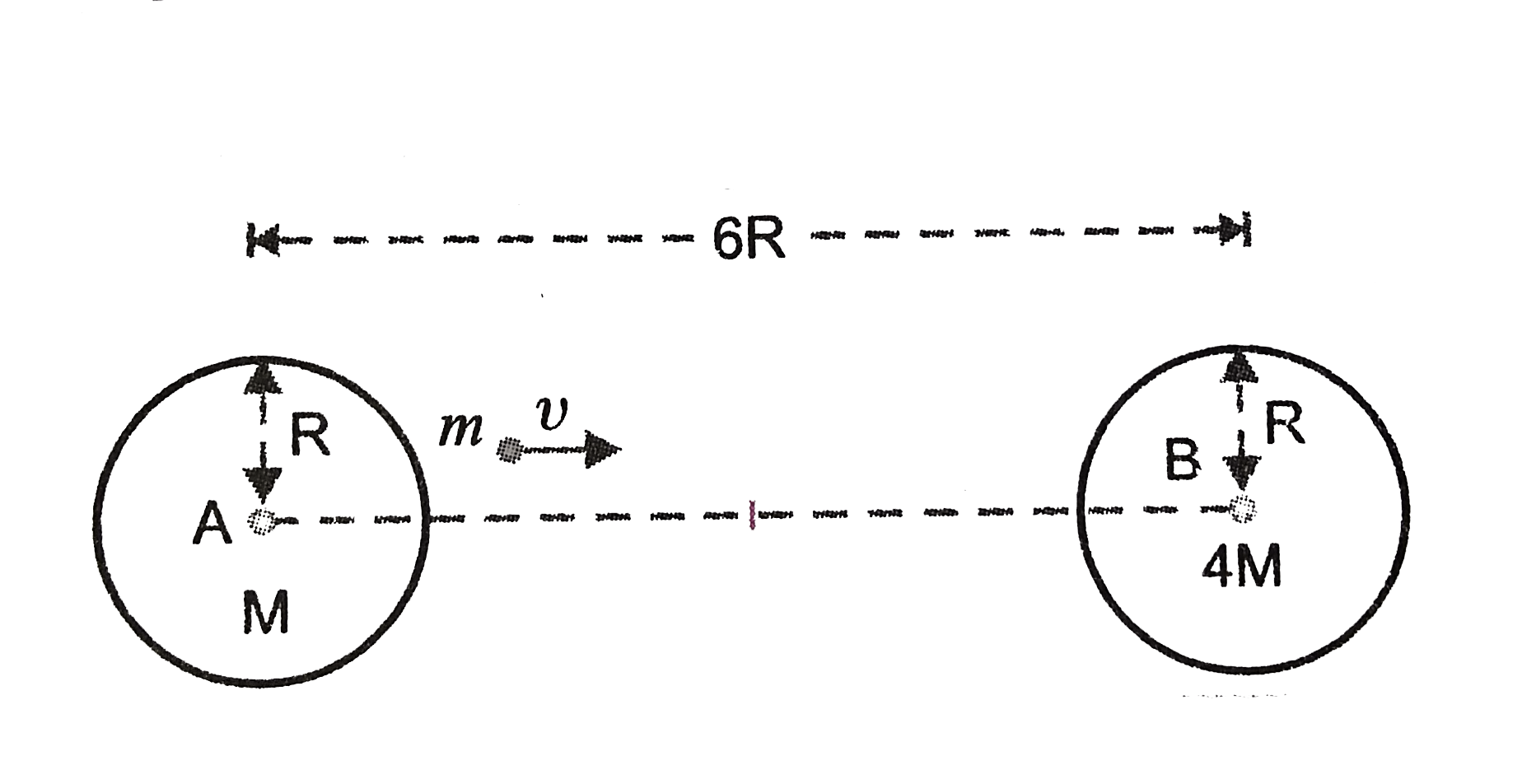Complete Solutions to SOLVED EXAMPLE of chapter GRAVITATION of Class 11 book with complete answers and questions
| Class 11 | PHYSICS |
| Chapter | GRAVITATION |
| NCERT | SOLVED EXAMPLE |
| Number Of Questions | 8 |
| Academic Year | 2023-24 |
Let the speed of the planet at the perihelion `P` in figure be `v_(P)` and the Sun planet distance `SP` be `r_(P)`. Relater `r_(P), v_(P)` to the corresponding quantities at the aphelion `(r_(A),v_(A))`. Will the planet take equal times to transverse `BAC` and `CPB`?
 03:05View Solution
03:05View SolutionThree equal masses of `m kg` each are fixed at the vertices of an equilateral triangle `ABC`.
a. What is the force acting on a mass `2m` placed at the centroid `G` of the triangle?
b. What is the force if the mass at the vertex `A` is doubled? Take `AG=BG=CG=1m`
 09:50View Solution
09:50View SolutionFind the gravitational potential energy of a system of four particles, each of mass `m` placed at the verticles of a square of side `l`. Also obtain the gravitaitonal potential at centre of the square.
 05:24View Solution
05:24View SolutionTwo uniform soild spheres of equal radii `R` but mass `M` and `4M` have a centre to centre separation `6 R`, as shows in Fig. (a) The two spheres are held fixed. A projectile of mass` m` is projected from the surface of the sphere of mass `M` directly towards the centre of teh second. Obtain an expression for the minimum speed `upsilon` of the projectile so that it reaches the surface of second sphere.
 13:19View Solution
13:19View SolutionThe planet Mars has two moons. Phobos and Delmos (i) phobos has period `7` hours, `39` minutes and an orbital radius of `9.4 xx 10^(3) km`. Calculate the mass of Mars. (ii) Assume that Earth and mars move in a circular orbit around the sun, with the martian orbit being `1.52` times the orbital radius of the Earth. What is the length of the martian year in days? `(G = 6.67 xx 10^(-11) Nm^(2) kg^(-2))`
04:42View SolutionYou are given the following data `:g=9.81ms^(-2)`, radius of earth `=6.37xx10^(6)m` the distance the Moon from the earth `=3.84xx10^(8) m` and the time period of the Moon's revolution `=27.3days`. Obtain the mass of the earth in two different ways. `G=6.67xx10^(-11)Nm^(2)kg^(2)`.
04:11View SolutionGiven that `T^(2) = kR^(3)`, express the constant `k` of the above relation in days and kilometres. Given, `k= 10^(-13)s^(2) m^(-3)`. The Moon is at a distance of `3.84 xx 10^(5) km` from the earth. Obtain its time period of revolution in days.
02:39View SolutionA `400 kg` satellite is in a circular orbit of radius `2 R_(E)` around the Earth. How much energy is required to transfer it to a circular orbit of radius `4 R_(E)`? What are the changes in the kinetic and potential energies?
Given `g = 9.81 m^(-2) , R_(E) = 6.37 xx 10^(6) m`.06:20View Solution
SOLVED EXAMPLE questions and complete solutions for chapter GRAVITATION of NCERT PHYSICS(HINGLISH) of Class 11
